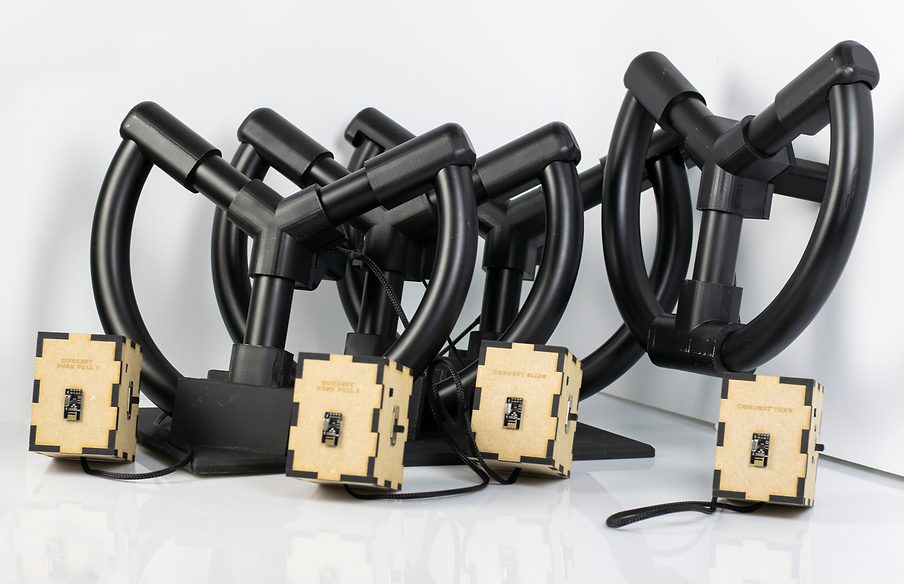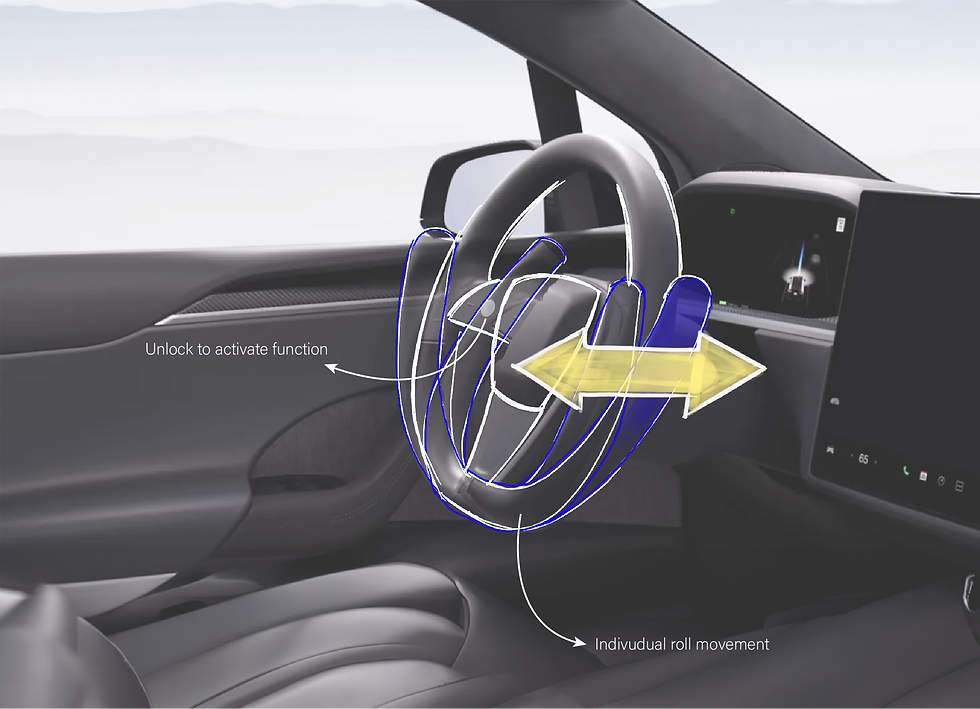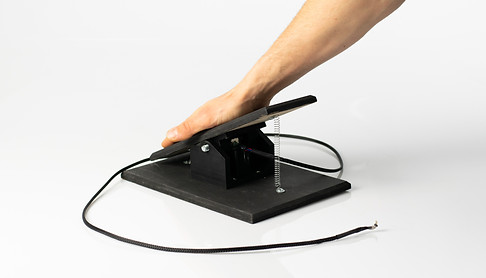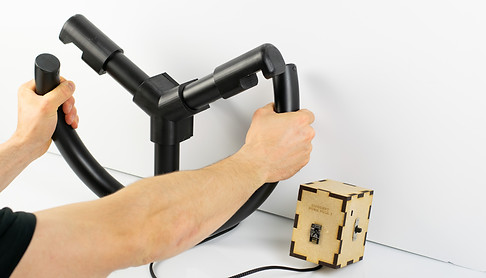
3D Driving Dynamics
This project focuses on enhancing the user experience during electric off-road driving, in particularly by applying the advantages quad motor technology. 3D Driving Dynamics (3DDD) is a tangible user interface which controls the quad motors independently. It enables the user to increase the freedom of motion by allowing the car to rotate around its axis, a feature known as a Tank Turn. Each of the four different steering wheel interactions was converted into a prototype and subsequently tested with multiple users.
Throughout the process the design has been validated by experts within the field of off-road driving and electric driving. A research through design approach was implemented throughout the project.

2024
The designs
To gain insights into which tangible interaction provided the best user experience, each steering wheel design was turned into a prototype. These four prototypes controlled the Tank Turn maneuver in distinct ways, allowing for a comparative evaluation. The design of these interactions was grounded in thorough literature and field research, ensuring that each prototype was informed by both theoretical knowledge and practical insights. By testing these variations, the goal was to identify the most intuitive and effective steering interaction for users.





The system
The system exists out of four parts as can been seen at the pictures underneath. The pedal ensures that the receiver is able to drive forward and backward. The user interface ensures that the receiver is able to turn around its axis, imitating the movement of a Tank Turn. The transmitter transmits data from both the user interface and the pedal to the receiver, resulting in a translocation of the receiver. A live POV from the receiver is then sent to the built-in dashboard screen.

Forward - backward
pedal

Electronic box, the transmitter

Scaled RC Land Rover Defender, the receiver

The user interface, one of the four
prototypes
Usertesting

To become familiar with the system each user started by testing one of the concepts. Participants were given 2 minutes to test each steering wheel. After they tested a steering wheel, they needed to fill in the User Experience Questionnair scale. In the meantime, the steering wheels were changed. Atfter testing all four interfaces a semi structered interview was conducted to get some qualitative insights.